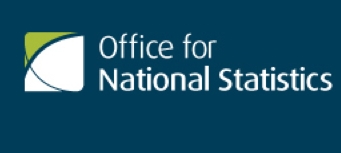
Inflation rises in post EU vote period

The first inflation figures for the period after the EU referendum have this morning shown the rate increased by 0.6% in the year to July 2016, compared with a 0.5% rise in the year to June.
The Office for National Statistics said: “Although the small increase in the rate between June 2016 and July 2016 takes it to the highest seen since November 2014, it is still relatively low in the historic context.”
Last month’s figures showed inflation increased to 0.5% in the year to June 2016, compared with a 0.3% rise in the year to May.
The ONS reported that the main contributors to the increase in the rate in today’s figures were rising prices for motor fuels, alcoholic beverages and accommodation services, and a smaller fall in food prices than a year ago.
These upward pressures were partially offset by falls in social housing rent, and falling prices for certain games and toys, it said.
CPIH (not a National Statistic) rose by 0.9% in the year to July 2016, up from 0.8% in June.
Reaction
Ben Brettell, senior economist at Hargreaves Lansdown, said: "July’s CPI report marks the first piece of hard economic data since the referendum result, and as such will be keenly scrutinised for any clues as to the impact of the Brexit vote.
"Perhaps in a taste of things to come, import prices rose 6.5% year-on-year, their fastest rate in five years.However, in truth the small tick upwards in the headline rate to 0.6% tells us little.
"The ONS collects data in the middle of each month, so the prices were collected just two or three weeks after the vote. It’s almost certain that the weaker pound will cause inflation to rise more sharply in the coming months, but the effect of sterling’s depreciation will take time to feed through fully into the figures as businesses gradually adjust to the new environment.
"Underlying inflationary pressure is hard to see, with Brexit-related economic uncertainty likely to dampen both consumer spending and wage growth in the short term. The Bank of England is rightly ignoring what should be a temporary spike in inflation when it sets monetary policy. The Bank is widely expected to leave rates on hold at its next meeting in September, though swap markets are pricing in around a 33% chance of a cut to zero by the end of the year."
Anna Stupnytska, global economist at Fidelity International, said: “UK headline CPI inflation was 0.6% year-on-year in July, up from 0.50% in June. UK inflation should continue heading higher in the coming months, as the weak pound pushes up the cost of imports further. The extent of sterling depreciation seen thus far, around 18% in trade-weighted term since the end of 2015, could boost inflation by more than 1%, with the peak likely to occur in 2017.
“As the Bank of England announced in August, they are intending to look through higher inflation overshooting the target of 2% and keep monetary policy loose to help the economy navigate through the Brexit-related uncertainty. For savers, this results in a ‘double whammy’, as rising inflation and falling yields eat away their savings. For consumers, rising inflation will lead to higher spending on everyday items including food.
“This reflects further bad news for the UK economy, with NIESR estimating a 0.2% month-on-month contraction in GDP for July (around 2% annualised)."
Russ Mould, investment director at AJ Bell, said: “At 0.6% UK inflation remains miles below the Bank of England’s 2.0% target. As such, the Bank of England is likely to push ahead with the three-part monetary stimulus programme, with the prospect of further interest rate cuts a possibility.
"However, seven years of record-low rates and Quantitative easing suggest the policy has been a failure so far, questioning whether “more of the same” is a suitable response now.
“This is the first full month’s figures following sterling’s decline in the wake of the EU referendum result on 24 June and the slight increase in inflation may give some hint of what a weak pound could mean going forward."
